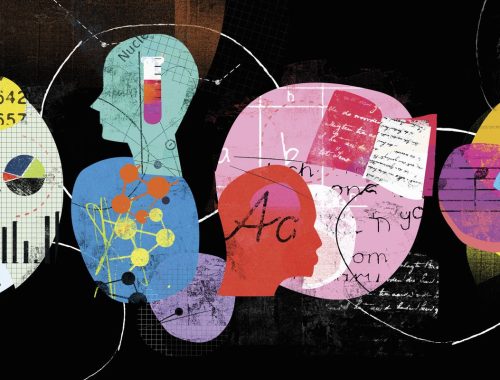
Everything You Need to Know About the Coronavirus and Its Origins
The COVID-19 pandemic, also known as the coronavirus pandemic, is an ongoing global pandemic of coronavirus disease 2019 (COVID-19), caused by severed acute respiratory syndrome coronavirus 2 (SARS-CoV-2).
Although the exact origin of the virus is still unknown, the first outbreak started in Wuhan, Hubei, China in December 2019. Many early cases of COVID-19 were linked to people who had visited the Huanan Seafood Wholesale Market in Wuhan. Still, it is possible that human-to-human transmission was already happening before this.
The current scientific consensus is that the virus is most likely of zoonotic origin, from bats or another closely-related mammal. A zoonosis (plural zoonoses or zoonotic diseases) is an infectious disease caused by a pathogen (an infectious agent, such as bacterium, virus, parasite or prion) that jumped from an animal (usually a vertebrate) to a human. Typically, the first infected human transmits the infectious agent to at least one other human, who, in turn, infects others.
The severity of COVID-19 symptoms is highly variable, ranging from unnoticeable to life-threatening. Severe illness is more likely in elderly COVID-19 patients and those who have certain underlying health conditions or comorbidities. COVID-19 transmits when people breathe in air contaminated by droplets and tiny airborne particles. Transmission can also occur if splashed or sprayed with contaminated fluids in the eyes, nose or mouth and rarely via contaminated surfaces. People remain contagious for up to 20 days and can spread the virus even if they do not develop any symptoms.
On the 30th March 2021, the World Health Organization (WHO) published the WHO-convened Global Study of Origins of SARS-CoV-2 highlighting the zoonotic source of the virus and the route of introduction to the human population, including the possible role of intermediate hosts. The WHO focused on four possible scenarios; direct zoonotic transmission, introduction through intermediate host followed by zoonotic transmission, introduction through the cold/food chain and introduction through a laboratory incident.

Direct Zoonotic Transmission
In this case, there is a transmission of SARS-CoV-2 (or very closely-related progenitor virus) from an animal reservoir host to human, followed by direct person-to-person transmission with or without the need for adaptation of the virus to humans. The speed of dissemination depends on chance events such as super spreading events.
The zoonotic introduction scenario was listed as possible to likely.
Introduction Through Intermediate Host Followed by Zoonotic Transmission
SARS-CoV-2 is transmitted from an animal reservoir to an animal host, followed by subsequent spread within that intermediate host, and then transmission to humans. The passage through an intermediate host can be with or without virus adaptation.
The scenario including introduction through an intermediary host was considered to be likely to very likely.
Introduction Through the Cold/Food Chain
Food-chain transmission can reflect direct zoonotic transmission or spillover through an intermediate host. Meanwhile, cold chain products may be a vehicle of transmission between humans. It would also refer to food-contamination events in addition to introductions. This paragraph focuses on cold/food chain products and their containers as potential routes of introduction of SARS-CoV-2.
The consensus was that given the level of evidence, the potential for SARS-CoV-2 introduction via cold/food chain products is considered possible.
Introduction Through a Laboratory Incident
SARS-CoV-2 is introduced through a laboratory incident, reflecting an accidental staff infection from laboratory activities involving the relevant viruses. The WHO did not consider the hypothesis of deliberate release or deliberate bio-engineering of SARS-CoV-2 for release. The latter has been ruled out by other scientists following analyses of the genome.
In view of the above, a laboratory origin of the pandemic was considered to be extremely unlikely.
Viruses constantly change through mutation, and new variants of a virus are expected to occur. Sometimes new variants emerge and disappear. Other times, new variants persist. Multiple variants of the virus that causes COVID-19 have been documented in the United States and globally during this pandemic.
Some variations allow the virus to spread more easily or make it resistant to treatments or vaccines. Those variants must be monitored more carefully.
There are four notable variants in the United States as of June 2021. They are as follows:
-
B.1.1.7 (Alpha)
This variant was first detected in the United States in December 2020. It was initially detected in the United Kingdom.
-
B.1.351 (Beta)
This variant was first detected in the United States at the end of January 2021. It was initially detected in South Africa in December 2020.
-
P.1 (Gamma)
This variant was first detected in the United States in January 2021. P.1 was initially identified in travelers from Brazil, who were tested during routine screening at an airport in Japan in early January.
-
B.1.617.2 (Delta)
This variant was first detected in the United States in March 2021. It was initially identified in India in December 2020.
As with any virus, changes are to be watched to ensure that testing, treatment and vaccines are still effective. Scientists will continue to examine new versions of the coronavirus’ genetic sequencing as it evolves. In the meantime, we need to continue all of our efforts to prevent viral transmission and vaccinate as many people as possible, and as soon possible.
Let us know if you enjoyed this article in the comment section below.
You May Also Like

Genetics and Intelligence: Unraveling the Complex Relationship
2023-10-25
The Ridiculously Comprehensive Guide to Eating Disorders: Part 2- Anorexia
2021-10-22

15 Comments
Pingback:
Pingback:
khu do thi Stella mega city
You are so awesome! I do not believe I have read through anything like this before.
So good to find someone with original thoughts on this issue.
Really.. many thanks for starting this up. This
web site is something that is required on the internet, someone with a little originality!
Pingback:
Pingback:
Pingback:
Pingback:
Pingback:
Pingback:
Pingback:
Pingback:
Pingback:
Pingback:
Pingback:
Pingback: